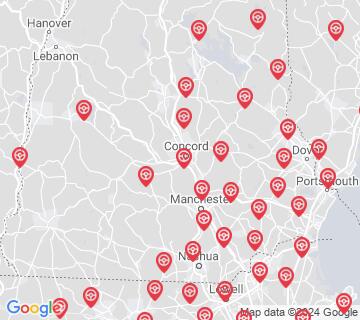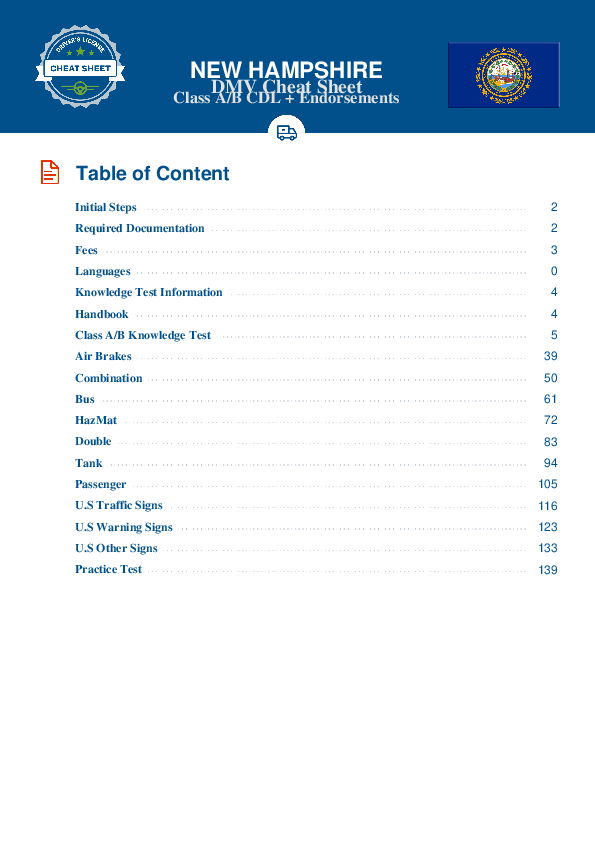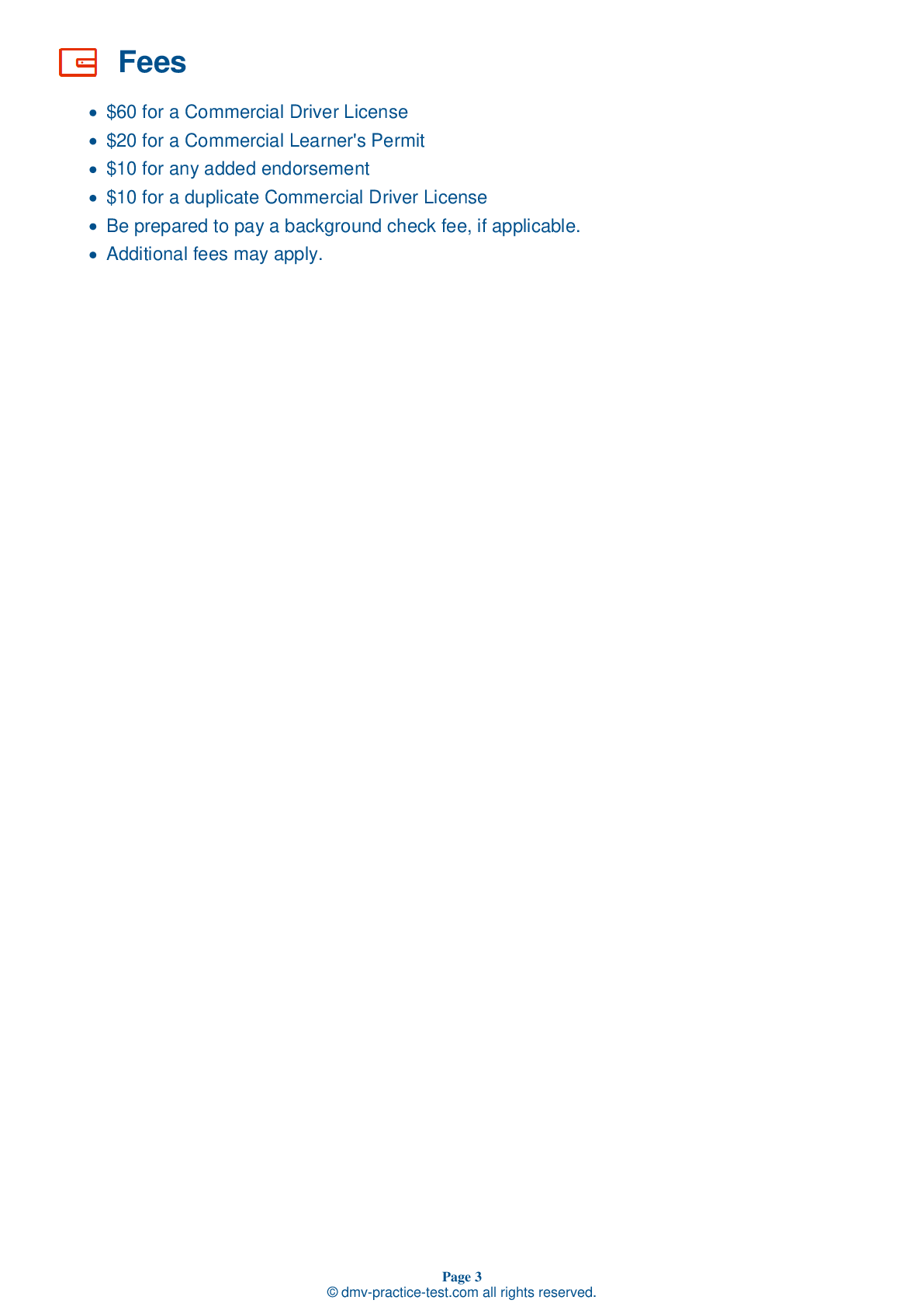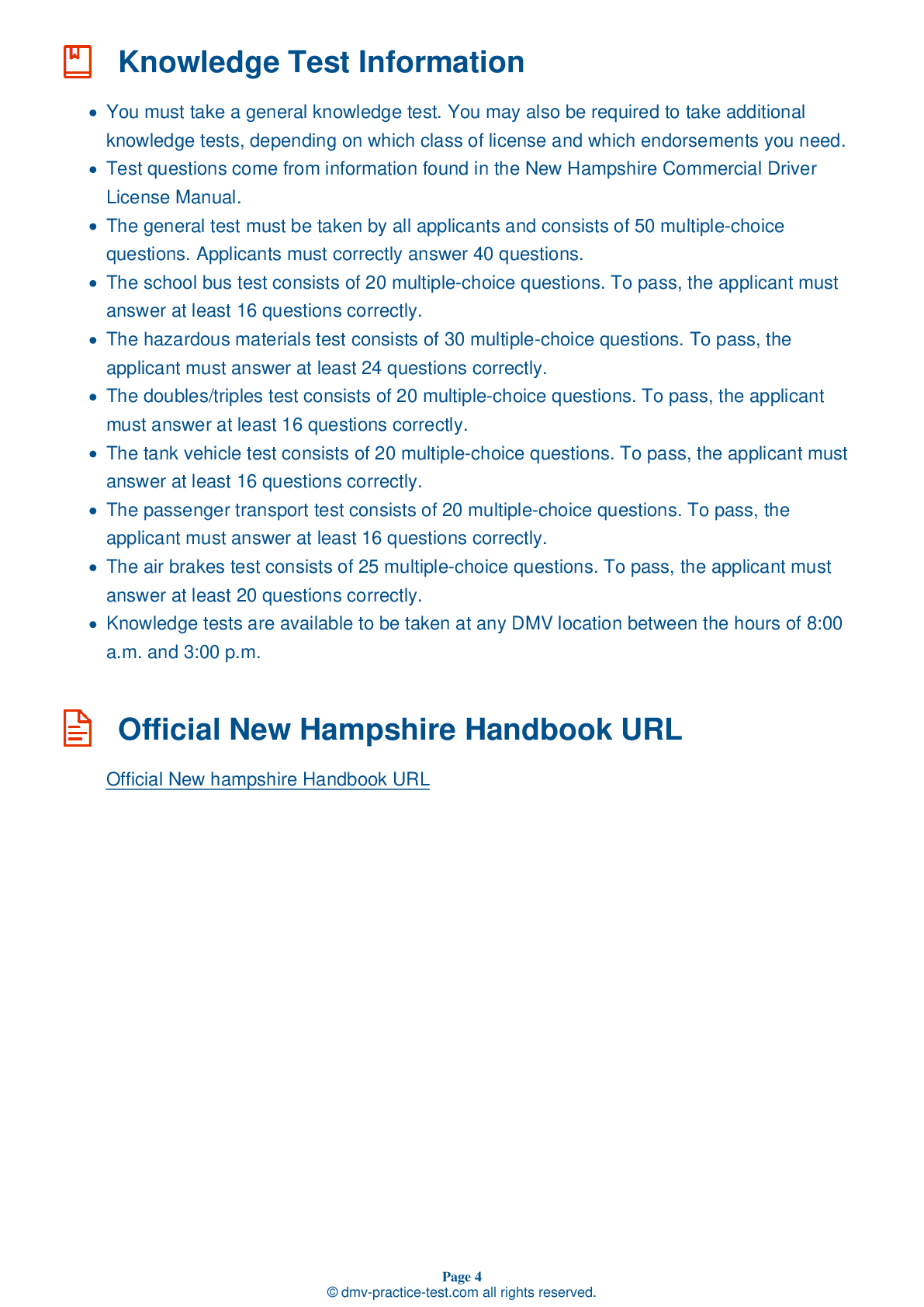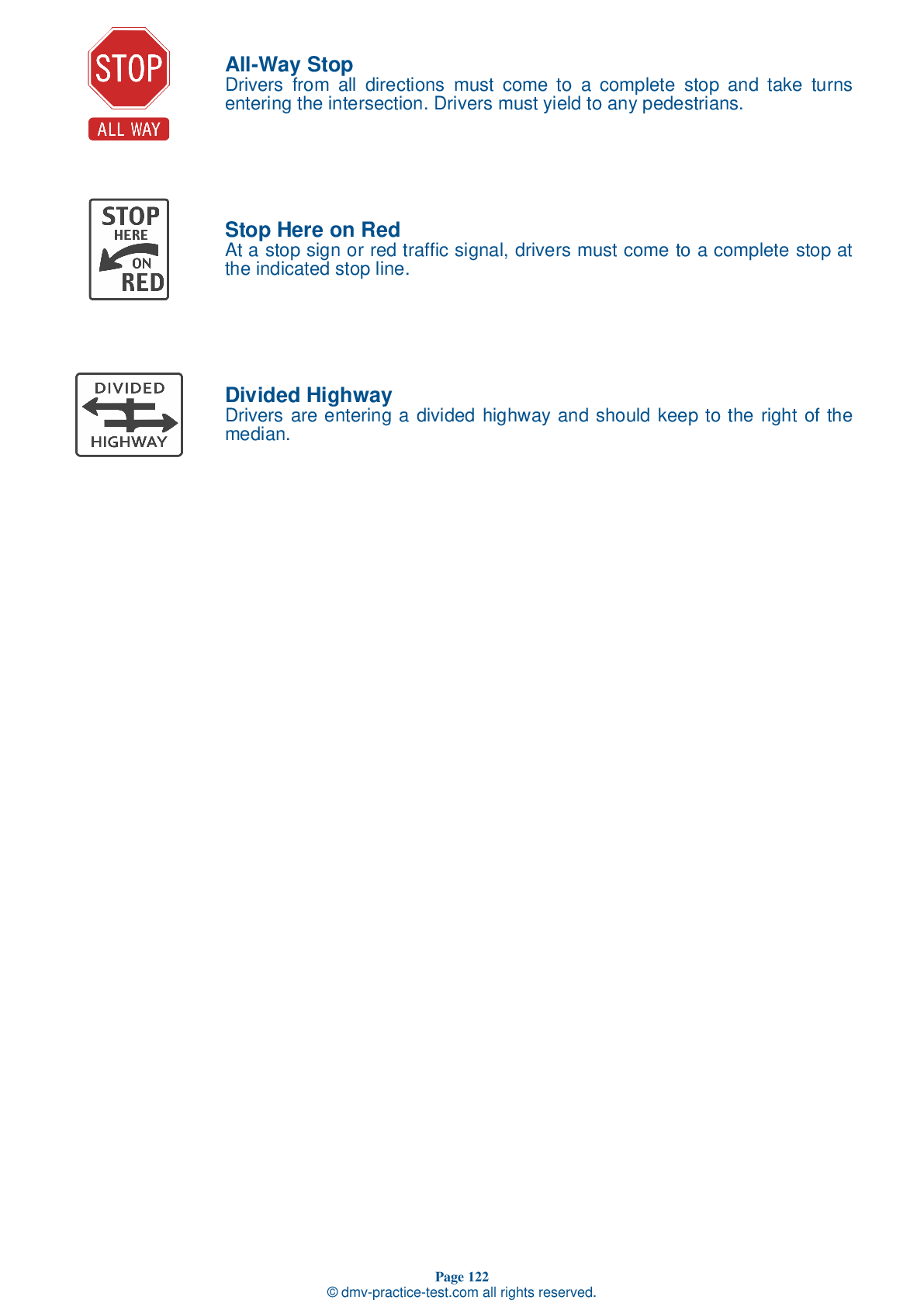Knowledge Test Class B #2
Class B Driving Test | New Hampshire 2025 #2 Page 5 of 7
Train for FREE online with our New Hampshire class B license test. The official exam test consists of several obligatory parts, with all of them checking your knowledge of different blocks of road rules. If you need to obtain a NH CDL class B permit in 2025, practice as much as possible. Free sample tests published on our website will help you check and improve your knowledge and boost your grades. Please bear in mind that CDL class B requirements may vary from state to state.
50
40
20
29 . When approaching a vehicle for a pre-trip inspection, a driver should look under the vehicle:
To see if the vehicle is on a decline.
When approaching your vehicle to conduct an inspection, you should look underneath it to make sure there are no fresh oil, coolant, grease, or fuel leaks on the ground. Leaks can indicate unsafe defects on a vehicle.
30 . The driver of a commercial motor vehicle:
Can use a cell phone at night.
It is prohibited for CMV drivers to use hand-held mobile phones while driving.
31 . Braking mechanisms are located inside:
Drum brakes are attached to the wheels and located on the axles of a vehicle. The braking mechanisms that cause the vehicle to stop can be found inside of a drum brake.
32 . You should check and adjust your mirrors:
Be sure to check your mirrors before beginning a drive. Your posture may change day to day and your mirrors may need to be adjusted.
33 . The front of an enclosed trailer should:
Be free of cracks.
When inspecting an enclosed trailer as a part of the vehicle inspection test, check the front area of the trailer for signs of damage, such as cracks, bulges, or holes.
34 . When cargo is being loaded, weight should be placed:
To reduce the risk of a vehicle tipping over, the weight of cargo should be distributed as low as possible.
35 . If using air tanks with manually operated drains, how often should you drain the tanks?
Once every 3,000 miles
